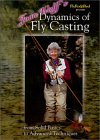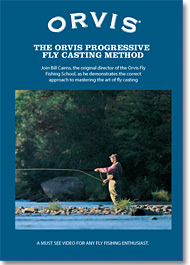Fly Fishing for Beginners - Overhead Cast
The overhead cast is the basic fly fishing cast. It has evolved over the years primarily due to advances in equipment. In the “olden days” before graphite rods, a lot more wrist movement was involved in the cast. Now, there is more arm and shoulder movement in order to “load the rod” to better utilize equipment (graphite). However, the basic concept is still the same. Bring the fly line overhead and behind you, then cast it front of you to the desired target.
Grip the Rod – hold the rod like you are shaking hands with someone. Your thumb should be on top of the rod and curl your fingers underneath. Your hand should be located in the middle of grip. The fly line should be between your index finger and the rod for better control.
Stripping Line – pull out about 10 yards of line from your reel and quickly move the tip of your rod back and forth horizontally. Your line should feed down your rod and onto the ground in front of you. This technique is important because it can be used to feed line when fishing downstream to keep your fly feeding into a pocket or seam.
Back Cast – Walk backward so that the line is extended in front of you. With your wrist stationary, lift the tip of the rod up by raising your forearm until the line is tight. Then quickly rotate your arm backward to bring the line behind you. The rod will bend (called loading). It is important to stop the rod near the top of you back cast which will release the line. The line should form a loop and gracefully unfold behind you. Then PAUSE until the line is completely behind you. This pause is very important. Many beginners start the forward cast too soon which does not allow the line to completely unfold behind them. The easiest way to know if the line is completely unfolded is to watch it!
Forward Cast – When the line is completely behind you, move your arm forward to load the rod again. Bring the tip of the rod forward and stop the rod. The line will follow. Gently lower the tip of your rod and the line should softly settle in front of you with the line tight.
False Casting – False casting is a technique used to extend more line or to dry off your fly. Instead of allowing your line to fall to the water after your forward cast, you start a back cast after the line is fully extended in front of you. Simply loosen the grip on your line near the completion of your next forward cast to extend more line. You should feel it slip through your fingers.
Problems – The ideal cast should have the line tight at all times and the line should form tight loops at the end of the back and forward casts. The line should remain horizontal to the ground at all time. Problems arise usually because timing.


